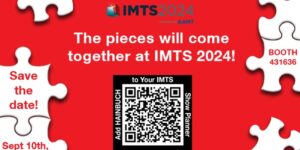Multitasking Revisited: When Hard Machining Jobs Get Easier
As competitive machining continues to grow more complex in the orthopedic instrument market, Dixon Surgical discovered how SolidCAM software could radically increased their productivity by halving cycle times and making cutters last five times longer in their turn-mill operations.
Posted: March 5, 2013
As competitive machining continues to grow more complex in the orthopedic instrument market, this shop discovered CAM software that radically increased their productivity by halving cycle times and making cutters last five times longer in their turn-mill operations.
Since 1948, Dixons Surgical Instruments Ltd. (Wickford, UK) has been manufacturing re-useable surgical instruments. As the market has matured, the company progressed into modeling and machining more complex orthopedic instruments in CAD.
Jay Dixon, the managing director at Dixons Surgical, explains that “we have been using CNC machining since the early 1990s and programming was either manual or on-machine conversational. Now we have standardized our shop floor on Mazak machine tools.”
He refers to a Quick Turn Nexus 200-II MSY multitasking turning center with a Matrix CNC control that uses smart conversational programming along with monitoring and diagnostics. The machine has a 2.5 in bar capacity and a maximum swing of 26.5 in and uses a 35 hp 5000 rpm main spindle with at 4500 rpm rotary tool spindle and subspindle for Y-axis milling and back-side finishing of parts.
Dixon also points out a VCN 410A vertical machining center with a Mazatrol Matrix CNC control that gives his shop a wide machining envelope to produce a variety of parts without changing the tool setup. It has a 35.4 in x 16.1 in table that carries a maximum load of 1100 lb, with X-axis travel of 22 in, Y-axis of 16.1 in and Z-axis of 20.08 in, all with traverse rates of 1417 ipm. The machine uses a 25 hp 12,000 rpm spindle and has a 30-tool magazine.
“A couple of years ago we began to get requests for parts that were already modelled in 3D which were difficult for us to program on these machines, especially the turn-mill,” recalls Dixon. “So we began looking for a suitable CAM system.” Given their initial investment in SolidWorks design software from Cadtek Systems Ltd. (Derbyshire, UK), the shop was looking for a package that would integrate with its current CAD platform and also be able to program its existing turn-mill machines.
Dixon noted that “We quickly appreciated the benefits of 3D CAD for both the new and existing parts. The parametric tools inside SolidWorks allow us to model just one part of a family of parts and, with a parametric table, automatically create the multiple versions, common in our industry. Our two main criteria for a CAM system – seamless integration in SolidWorks and the ability to program our Nexus – eliminated every system we looked at, except for SolidCAM.”



